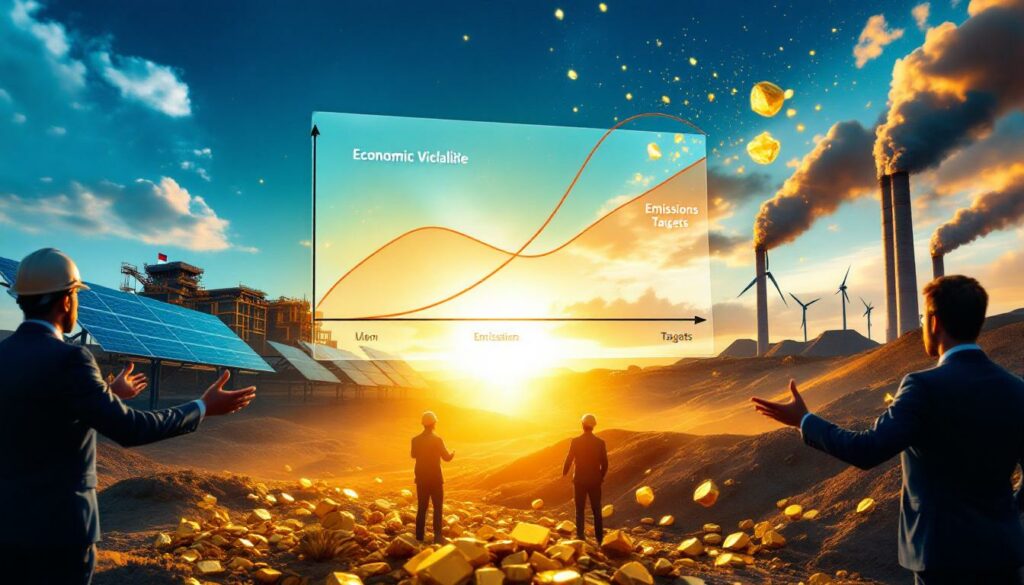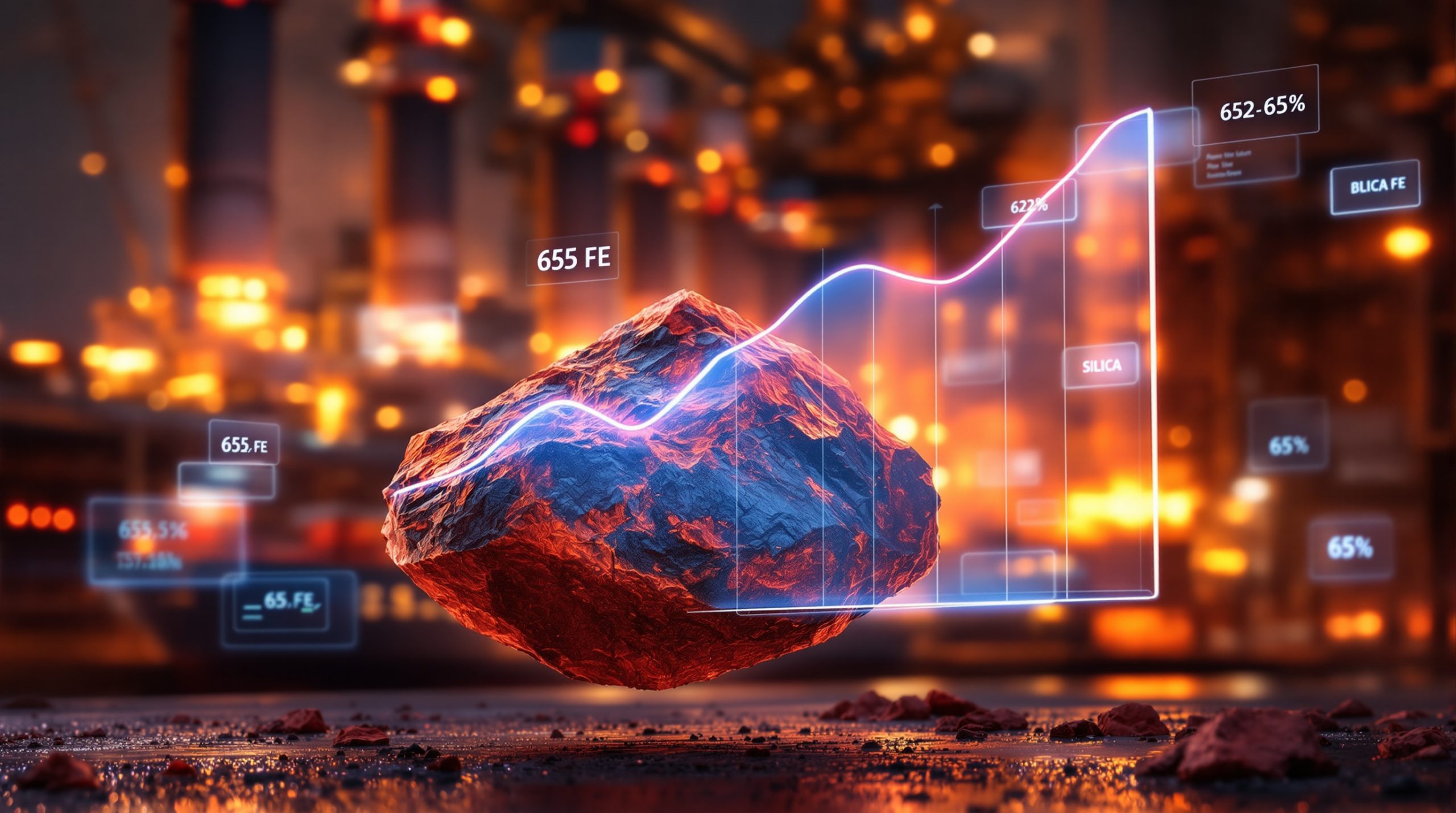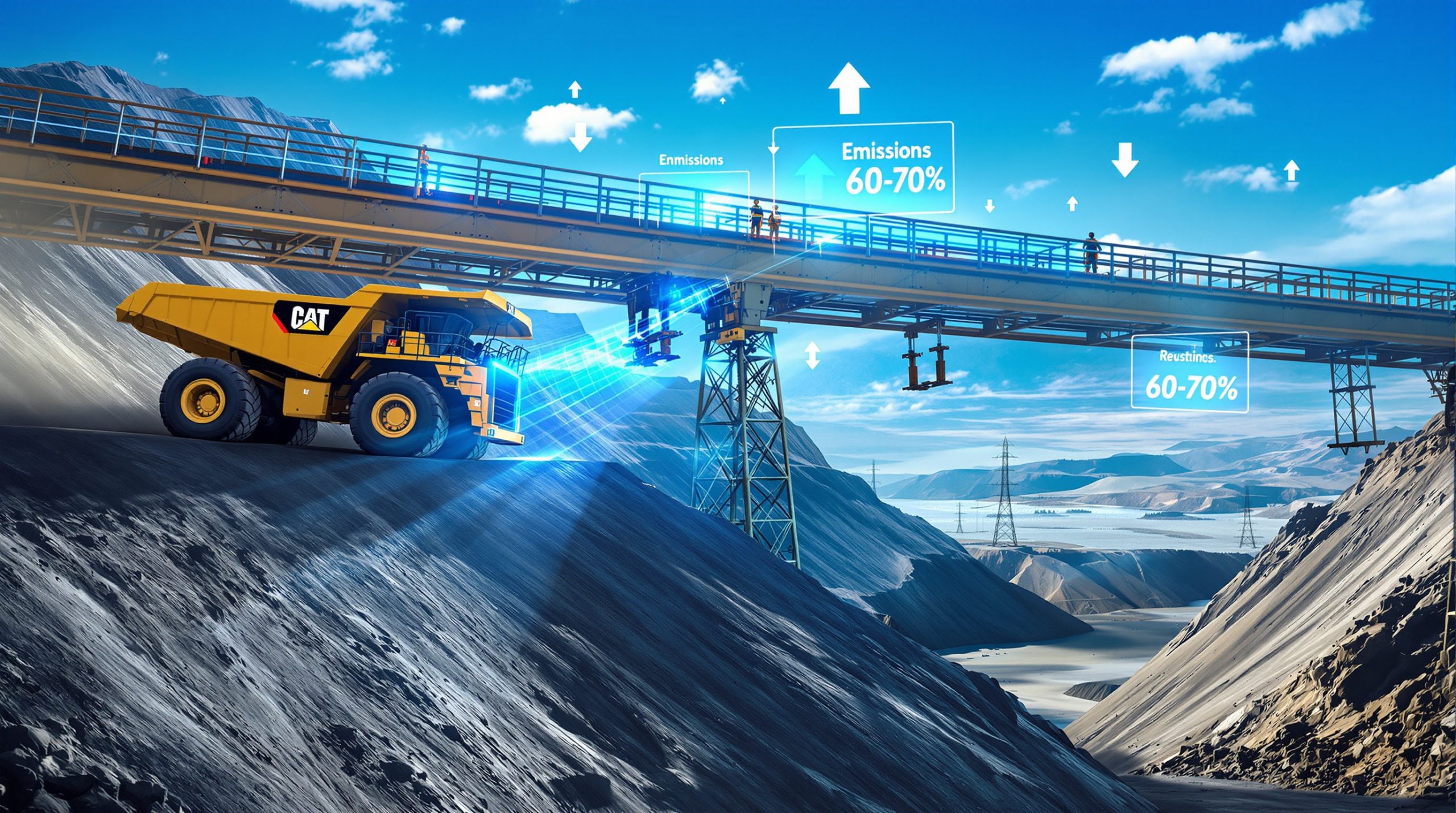Australia's Mining Industry Challenges Energy Transition Goals
The Australian mining sector has emerged as a vocal critic of the nation's ambitious renewable energy transition plans, questioning both the technical feasibility and economic viability of achieving net-zero emissions by 2050. This skepticism was prominently displayed at the 2025 Diggers and Dealers Mining Forum, where industry leaders, energy researchers, and government officials engaged in spirited debate about Australia's energy future. Furthermore, the discussions highlighted growing concerns about how the critical minerals transition might affect Australia's economic competitiveness.
What is the Diggers and Dealers Mining Forum?
Australia's Premier Mining Conference
The Diggers and Dealers Mining Forum stands as Australia's most influential annual mining conference, attracting over 2,300 delegates to the historic mining city of Kalgoorlie-Boulder. Now in its 34th year, the 2025 event served as a critical junction where mining operators, investors, and technology providers gathered to discuss the industry's most pressing challenges and opportunities.
The forum's significance extends beyond mere networking, functioning as a barometer for industry sentiment and a platform where emerging trends receive serious consideration from decision-makers who control billions in mining investments. The conference has increasingly focused on mining industry innovation as a key theme.
Key Topics at the 2025 Forum
While discussions about the surging gold price and workforce housing shortages attracted significant attention, the organizers deliberately positioned Australia's renewable energy transition as a central theme for debate. The 2025 agenda specifically emphasized examining the practical realities of meeting emissions targets, particularly as they affect the resource-intensive mining sector.
The forum's technical sessions explored how traditional mining operations could potentially adapt to new energy systems, while financial discussions centered on whether renewable investments deliver adequate returns compared to conventional power sources in remote mining locations.
Why are miners questioning Australia's renewable energy transition?
Skepticism From Energy Researchers
The keynote panel featured prominent energy transition critics who presented technical and economic arguments challenging Australia's net-zero pathway. Centre for Independent Studies director of energy research Aidan Morrison delivered a particularly pointed critique, characterizing Australia's energy transition as a "zombie" artificially sustained through government subsidies rather than economic viability.
"There is no serious intellectual defense for meeting 2050 net-zero targets," Morrison stated, arguing that policy makers have failed to acknowledge fundamental engineering and economic constraints. "What we're seeing is a kind of zombie energy transition that's being forcibly intubated and resuscitated by government subsidies."
Canadian nuclear energy advocate Chris Keefer supported this perspective, suggesting that the technical challenges of integrating renewable energy at a national scale have been consistently underestimated by policymakers, as reported in recent industry analysis.
Technical Feasibility Concerns
Morrison challenged a core assumption underlying Australia's renewable energy strategy: that clean energy can be efficiently shared across the continent's vast geography. He described this notion as "absolutely bonkers" from an engineering perspective.
"The idea that Australia functions as some singular, big bucket where if it's sunny somewhere, it's immediately shareable somewhere else defies basic electrical engineering principles," Morrison explained. He pointed to transmission constraints, grid stability challenges, and the practical limitations of energy storage at scale as critical barriers that policy discussions often overlook.
The panel highlighted how the "intermittency problem" of renewable energy becomes exponentially more complex at a national level compared to individual mining operations, where tailored solutions can address specific localized needs.
Global Context Arguments
Dr. Keefer positioned Australia's energy transition challenges within a broader geopolitical context, questioning whether Australian emissions reduction efforts would meaningfully impact global climate outcomes. He pointed to China's massive energy development in Inner Mongolia as a case study in pragmatic energy policy.
"While Australia debates eliminating coal and gas, China is building the world's largest renewable energy zone in Inner Mongolia—while simultaneously expanding coal power capacity," Keefer noted. "This demonstrates the practical reality that even as renewable deployment accelerates globally, fossil fuel consumption continues to grow to meet rising energy demands."
This global perspective raised questions about whether Australia's stringent emissions targets represent an economically rational approach or merely symbolic policy that disadvantages Australian industry without proportional environmental benefit.
How are mining companies implementing renewable energy solutions?
Australia's First "Net-Zero" Gold Mine
Despite the keynote panel's skepticism, practical examples of successful renewable energy implementation featured prominently at the forum. Most notably, Bellevue Resources announced Australia's achievement of the first "net-zero" gold mine, located 40km north of Leinster in the northern Goldfields.
Managing Director Darren Stralow revealed that their operation had achieved net-zero carbon emissions during the first half of 2025, demonstrating that clean energy goals can be practically implemented in mining environments. The achievement resulted from a comprehensive energy strategy that combined solar generation, battery storage, and careful energy management systems.
"We've proven that emissions reduction and profitable gold production aren't mutually exclusive goals," Stralow stated. "Our net-zero achievement has allowed us to work with some like-minded partners and to position our gold differently in the market."
Economic Benefits for Remote Operations
Several mining executives emphasized that renewable energy adoption at remote sites is driven primarily by economic considerations rather than purely environmental concerns. Regis Resources Managing Director Jim Beyer highlighted the dual benefits their operations have realized.
"Our solar farm at the Duketon site delivers significant cost savings compared to diesel transportation, while simultaneously reducing our carbon footprint," Beyer explained. "When you're operating 1,000 kilometers from Perth, the economics of generating power on-site become incredibly compelling."
This pragmatic approach demonstrates how financial and environmental goals can align, particularly in remote locations where traditional fuel logistics create substantial cost pressures. Many operations are now exploring decarbonisation benefits beyond just emissions reduction.
High Renewable Penetration Success Stories
The Bellevue Gold Mine has achieved 80-90% renewable energy penetration, establishing the highest rate in Australia's mining sector. Similarly, the Kathleen Valley Lithium Mine has implemented significant renewable infrastructure that combines solar, wind, and battery storage technologies.
These success stories demonstrate that large-scale renewable adoption is technically feasible for individual mining operations, even as questions remain about nationwide implementation. The key difference appears to be scale and system design—individual mines can develop customized energy solutions optimized for their specific operational patterns and geographic advantages.
What is the government's position on energy transition goals?
Federal Commitment to Net Zero
Federal Resources Minister Madeleine King used the forum to reaffirm the government's unwavering commitment to achieving net zero emissions by 2050, directly countering the keynote panel's skepticism.
"I don't mind people having an opinion; I don't share that opinion," King stated firmly. "Australia should continue to strive for net zero by 2050. The technical challenges are real, but innovation and determination will help us overcome them."
King emphasized that government policy would continue to support both renewable energy development and responsible resource extraction, viewing these as complementary rather than contradictory priorities for Australia's economic future.
State Positions on Nuclear Energy
Western Australian Mines Minister David Michael confirmed the state government would maintain its current restrictive position on uranium mining, ruling out any new approvals beyond those granted by the previous Barnett Liberal Government in 2017.
"The state's position on uranium mining remains unchanged," Michael stated. "This limits uranium development in Western Australia to the previously approved projects, including Deep Yellow's Mulga Rock project, which is estimated to be Australia's third-largest untapped uranium resource."
This stance highlights the complex interplay between state and federal energy policies, with Western Australia effectively limiting one potential low-emission energy resource while supporting renewable development, as detailed in the Diggers and Dealers forum summary.
Support for Mining-Sector Renewable Projects
Government representatives highlighted successful renewable energy implementations at mining operations as examples of progress toward emissions reduction goals. The Ministers pointed to these projects as evidence that the mining sector can thrive while contributing to national climate objectives.
"The innovations we're seeing at operations like the Kathleen Valley Lithium Mine and Bellevue Gold Mine demonstrate that Australian mining can lead the world in sustainable practices," Minister King noted, suggesting these projects align with broader national climate strategies.
What makes renewable energy viable for mining operations?
Cost Effectiveness in Remote Locations
For remote mining operations, renewable energy infrastructure offers compelling economic advantages that extend beyond environmental benefits. The high cost of transporting diesel fuel to isolated locations—often exceeding $0.40 per liter in logistics expenses alone—makes on-site renewable generation financially competitive.
Solar installations at remote mines can deliver electricity at costs significantly below diesel generation, with several operations reporting cost savings of 20-30% on their energy expenses. These economic benefits provide immediate returns while simultaneously reducing emissions, creating a rare win-win scenario for mining companies.
Hybrid Energy Systems
Mining companies are implementing sophisticated hybrid energy systems that combine renewable sources with traditional power generation to ensure reliability while maximizing clean energy utilization. At the Tropicana Gold Mine, operations utilize gas power supplemented by wind and solar infrastructure.
"The key to successful renewable integration is intelligent system design," explained one mining energy specialist at the forum. "By combining complementary generation sources with advanced energy management systems, we can achieve both reliability and high renewable penetration."
These hybrid approaches demonstrate how renewable technologies can be pragmatically deployed within the constraints of mining operations, which require consistent power regardless of weather conditions or time of day. The industry continues to explore electrification in mining as a key component of these systems.
Corporate Sustainability Goals
Mining companies increasingly view renewable energy adoption as strategic for meeting corporate sustainability commitments and accessing premium markets for responsibly produced minerals. Bellevue Gold's Managing Director noted their net-zero achievement "allowed us to work with some like-minded partners… and to look to sell our gold in a bit of a different way."
This suggests emerging market advantages for clean energy adopters, with environmentally conscious consumers and manufacturers potentially willing to pay premiums for materials produced with lower carbon footprints.
Several mining executives noted that major technology manufacturers and jewelry companies have begun asking detailed questions about the carbon intensity of their mineral inputs, indicating a market shift that could financially reward early adopters of renewable energy.
What are the challenges to achieving nationwide renewable energy targets?
Scale and Infrastructure Requirements
While individual mining operations have successfully implemented renewable energy solutions, scaling these approaches to meet national energy demands presents formidable challenges. The keynote panel highlighted the vast infrastructure requirements for a nationwide renewable energy network capable of meeting Australia's total energy needs.
Building sufficient transmission capacity alone would require an unprecedented infrastructure program, with preliminary estimates suggesting more than 10,000 kilometers of new high-voltage transmission lines would be needed to connect renewable resources to population centers.
The sheer material requirements for a national renewable transition are staggering—requiring millions of tons of steel, copper, aluminum, and rare earth elements, ironically increasing demand for mining outputs in the process of reducing emissions.
Economic Sustainability Concerns
Critics argue that Australia's renewable energy transition relies heavily on government subsidies rather than economic viability. Morrison characterized the transition as being "forcibly intubated and resuscitated by government subsidies," questioning whether renewable energy can sustain nationwide implementation without continued financial support.
The current subsidy structure includes feed-in tariffs, renewable energy certificates, and direct government investments that collectively support the economic case for renewable development. If these support mechanisms were removed, many renewable projects would struggle to compete with conventional generation on pure cost metrics, according to several financial analysts who presented at the forum.
Global Emissions Context
Australia's emissions reduction efforts exist within a complex global context where major economies continue expanding both renewable and fossil fuel infrastructure simultaneously. This reality raises questions about the impact of Australia's transition efforts on global emissions outcomes.
"Australia contributes approximately 1.3% of global carbon emissions," noted one presenter. "Even if we achieved net zero tomorrow, the global impact would be minimal without similar actions from major emitters like China, the United States, and India."
This global perspective doesn't suggest Australia should abandon climate goals, but rather that domestic policy should be designed with realistic expectations about its global influence and potential economic trade-offs. The mining sector continues to pursue sustainable mining transformation within this complex context.
FAQs About Australia's Energy Transition and Mining
Why are mining companies investing in renewable energy if critics question its viability?
Mining companies, particularly those operating in remote locations, find clear economic benefits in renewable energy adoption. The high cost of diesel transportation makes solar and wind power financially competitive, while also helping companies meet sustainability goals and potentially access premium markets for responsibly produced minerals.
The distinction is important: what works economically at the individual mine level (where tailored solutions can be implemented) doesn't necessarily scale efficiently to the national grid level, where intermittency, transmission constraints, and baseload requirements create more complex engineering challenges.
What is the significance of Australia's first "net-zero" gold mine?
Bellevue Gold's achievement demonstrates that mining operations can substantially reduce or eliminate carbon emissions while maintaining profitable production. This milestone establishes a precedent for the industry and provides a real-world case study of how mining companies can align with global emissions reduction goals.
The success at Bellevue resulted from a combination of renewable generation, energy efficiency measures, and careful load management—proving that even energy-intensive processes like gold extraction can be decarbonized with the right approach and suitable geographic conditions.
How do renewable energy implementations at mine sites differ from nationwide energy transition?
Individual mining operations can implement tailored renewable solutions that match their specific energy needs and location advantages. These isolated systems don't face the same grid stability and transmission challenges as nationwide infrastructure, making them more immediately feasible than full-scale national transitions.
Mine sites also typically have more flexibility to adjust operations around energy availability, something that's much harder to implement across an entire economy where hospitals, essential services, and manufacturing processes require consistent, reliable power regardless of weather conditions.
What role does government policy play in mining sector energy transitions?
Government policies, including emissions targets and renewable energy incentives, create the framework within which mining companies make energy decisions. While some critics characterize these policies as artificially supporting renewable adoption, they provide the long-term certainty needed for companies to make significant infrastructure investments.
The tension between policy aspirations and technical reality remains a central challenge for Australia's energy future. Finding the balance between ambitious climate goals and practical implementation pathways will likely require ongoing dialogue between government, industry, and energy experts.
Further Exploration
Readers interested in learning more about Australia's energy transition and mining industry perspectives can explore related educational content from ABC News in the article "Diggers and Dealers panel questions Australia's energy future and emissions target".
Looking for the Next Big Mining Discovery?
Stay ahead of the market with Discovery Alert's proprietary Discovery IQ model, which provides instant notifications on significant ASX mineral discoveries, turning complex data into actionable investment opportunities. Explore how major mineral discoveries have historically led to substantial returns by visiting Discovery Alert's dedicated discoveries page and begin your 30-day free trial today.




